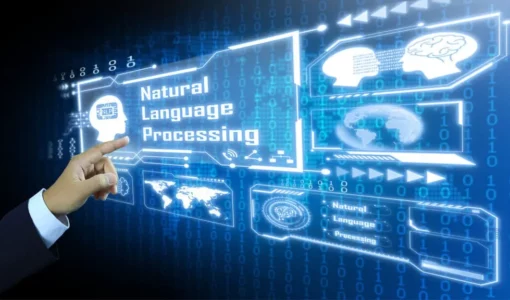What is Sentiment Analysis? Sentiment Analysis Guide
18 Nov

They can help you optimize your content for semantic relevance and comprehensiveness, as well as for voice search and conversational AI. Some examples of semantic analysis tools are TextRazor, Google Natural Language API, or MarketMuse. As we enter the era of ‘data explosion,’ it is vital for organizations to optimize this excess yet valuable data and derive valuable insights to drive their business goals. Semantic analysis allows organizations to interpret the meaning of the text and extract critical information from unstructured data.
ChatGPT AI explains what it does and why not to fear it. – phillyBurbs.com
ChatGPT AI explains what it does and why not to fear it..
Posted: Mon, 05 Jun 2023 08:50:30 GMT [source]
The science behind the process is based on algorithms of natural language processing and machine learning to categorize pieces of writing as positive, neutral, or negative. Attention mechanism was originally proposed to be applied in computer vision. When human brain processes visual signals, it is often necessary to quickly scan the global image to identify the target areas that need special attention. The attention mechanism is quite similar to the signal processing system in the human brain, which selects the information that is most relevant to the present goal from a large amount of data.
What is Sentiment Analysis? – Sentiment Analysis Guide
These chatbots act as semantic analysis tools that are enabled with keyword recognition and conversational capabilities. These tools help resolve customer problems in minimal time, thereby increasing customer satisfaction. Semantic analysis methods will provide companies the ability to understand the meaning of the text and achieve comprehension and communication levels that are at par with humans. Semantic analysis techniques and tools allow automated text classification or tickets, freeing the concerned staff from mundane and repetitive tasks.
- This operation is performed on all these adjustment parameters one by one, and their optimal system parameter values are obtained.
- Hence, under Compositional Semantics Analysis, we try to understand how combinations of individual words form the meaning of the text.
- In semantic analysis with machine learning, computers use word sense disambiguation to determine which meaning is correct in the given context.
- Tracking customer sentiment over time will help you measure and understand it.
- Every year industry pundits predict data and analytics becoming more valuable the following year.
- For different items with common features, a user may give different sentiments.
From this point of view, sentences are made up of semantic unit representations. A concrete natural language is composed of all semantic unit representations. Sentiment analysis is a branch of psychology that use computational approaches to evaluate, analyze, and disclose people’s hidden feelings, thoughts, and emotions underlying a text or conversation. Semantic analysis analyzes the grammatical format of sentences, including the arrangement of words, phrases, and clauses, to determine relationships between independent terms in a specific context.
Semantic Analysis Tutorial Google Colaboratory
Sentiment Analysis deals with the perception of the product and understanding of the market through the lens of sentiment data. Where nd is the number of datasets and ri is the rank of the method for dataset i. It is important to notice that the rank was calculated based on Macro-F1. The available implementation of OpinionFinder,Footnote 5 for instance, generates polarity outputs (−1, 0, or 1) for each sentiment clue found in a sentence so that a single sentence can have more than one clue. We considered the polarity of a single sentence as the sum of the polarities of all the clues.
10 Best Python Libraries for Sentiment Analysis (2023) – Unite.AI
10 Best Python Libraries for Sentiment Analysis ( .
Posted: Mon, 04 Jul 2022 07:00:00 GMT [source]
If combined with machine learning, semantic analysis lets you dig deeper into your data by making it possible for machines to pull purpose from an unstructured text at scale and in real time. Semantic analysis, a natural language processing method, entails examining the meaning of words and phrases to comprehend the intended purpose of a sentence or paragraph. Uber uses semantic analysis to analyze users’ satisfaction or dissatisfaction levels via social listening. Moreover, granular insights derived from the text allow teams to identify the areas with loopholes and work on their improvement on priority.
Map out your content structure and outline based on semantic research
Additionally, SemEval labeled datasets are usually focused on one specific type of data, such as tweets, and do not represent a wide range of social media data. In our evaluation effort, we consider one dataset from SemEval 2013 and two methods that participated in the competition in that same year. metadialog.com First, we show that there is no single method that always achieves the best prediction performance for all different datasets, a result consistent with the ‘there is no free lunch theorem’ [16]. We also show that existing methods vary widely regarding their agreement, even across similar datasets.
- For this, the language dataset on which the sentiment analysis model was trained must be exact and large.
- Meaning representation can be used to reason for verifying what is true in the world as well as to infer the knowledge from the semantic representation.
- It is then offset by the number of documents in the corpus that contain the word.
- Gwen Shapira, co-founder and CPO of Nile joins us to help define real-time data, discuss who needs it (and who probably doesn’t) and how to not build yourself into a corner with your architecture.
- For example, you instinctively know that a game that ends in a “crushing loss” has a higher score differential than the “close game”, because you understand that “crushing” is a stronger adjective than “close”.
- Read this post to learn about safety strategies and their real-world value.
It also enables organizations to discover how different parts of society perceive certain issues, ranging from current themes to news events. Companies can immediately respond to public mood using this information. Sentiment analysis sometimes referred to as information extraction, is an approach to natural language recognition which identifies the psychological undertone of a text’s contents. Businesses use this common method to determine and categorise customer views about a product, service, or idea.
How are Sentiment Scores Deduced from Customer Feedback?
Algorithms have trouble with pronoun resolution, which refers to what the antecedent to a pronoun is in a sentence. For example, in analyzing the comment “We went for a walk and then dinner. I didn’t enjoy it,” a system might not be able to identify what the writer didn’t enjoy — the walk or the dinner. Organizations use this feedback to improve their products, services and customer experience.
What is an example of semantic learning?
For example, using semantic memory, you know what a dog is and can read the word 'dog' and be aware of the meaning of this concept, but you do not remember where and when you first learned about a dog or even necessarily subsequent personal experiences with dogs that went into building your concept of what a dog is.
According to a survey by Podium, 93 percent of consumers say that online reviews influence their buying decisions. In this context, organizations that constantly monitor their reputation can timely address issues and improve operations based on feedback. Sentiment analysis allows for effectively measuring people’s attitude towards an organization in the information age. Start with getting authorized credentials from Twitter, create the function, and build your first test set using the Twitter API. Unless you know how to use deep learning for non-textual components, they won’t affect the polarity of sentiment analysis.
What are the processes of semantic analysis?
For example, semantic analysis can generate a repository of the most common customer inquiries and then decide how to address or respond to them. Relationship extraction is a procedure used to determine the semantic relationship between words in a text. In semantic analysis, relationships include various entities, such as an individual’s name, place, company, designation, etc. Moreover, semantic categories such as, ‘is the chairman of,’ ‘main branch located a’’, ‘stays at,’ and others connect the above entities. Sentiment analysis is the process of classifying text by identifying subjectivities expressed in it.
Also, ‘smart search‘ is another functionality that one can integrate with ecommerce search tools. The tool analyzes every user interaction with the ecommerce site to determine their intentions and thereby offers results inclined to those intentions.
Analyze Sentiment in Real-Time with AI
And for that, you need to analyze comments and open-ended survey responses that do not have any fixed response. This allows customers to write free-flowing comments, which can give you insight into aspects of your business that you were not even aware of. For example, it can help give varying sentiment scores based on words that denote different negative emotions such as anxiety, disappointment, regret, anger, and so on.
Which tool is used in semantic analysis?
Lexalytics
It dissects the response text into syntax and semantics to accurately perform text analysis. Like other tools, Lexalytics also visualizes the data results in a presentable way for easier analysis. Features: Uses NLP (Natural Language Processing) to analyze text and give it an emotional score.
The similarity calculation model based on the combination of semantic dictionary and corpus is given, and the development process of the system and the function of the module are given. Based on the corpus, the relevant semantic extraction rules and dependencies are determined. It can greatly reduce the difficulty of problem analysis, and it is not easy to ignore some timestamped sentences. In addition, the constructed time information pattern library can also help to further complete the existing semantic unit library of the system. Due to the limited time and energy of the author and the high complexity of the model, further research is needed in the future. Subsequent efforts can be made to reduce the complexity of the model, optimize the structure of attention mechanism, and shorten the training time of the model without reducing the accuracy.
What are examples of semantic sentences?
Examples of Semantics in Writing
Word order: Consider the sentences “She tossed the ball” and “The ball tossed her.” In the first, the subject of the sentence is actively tossing a ball, while in the latter she is the one being tossed by a ball.

